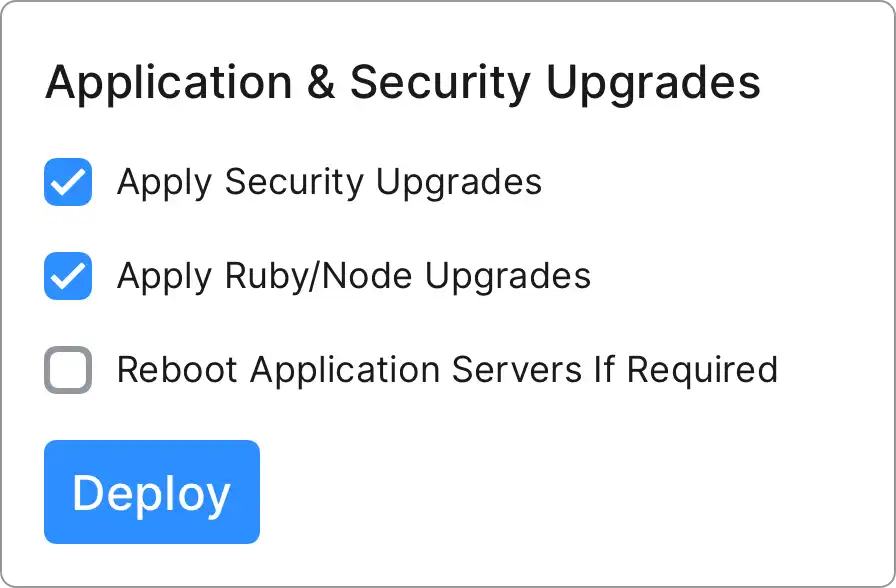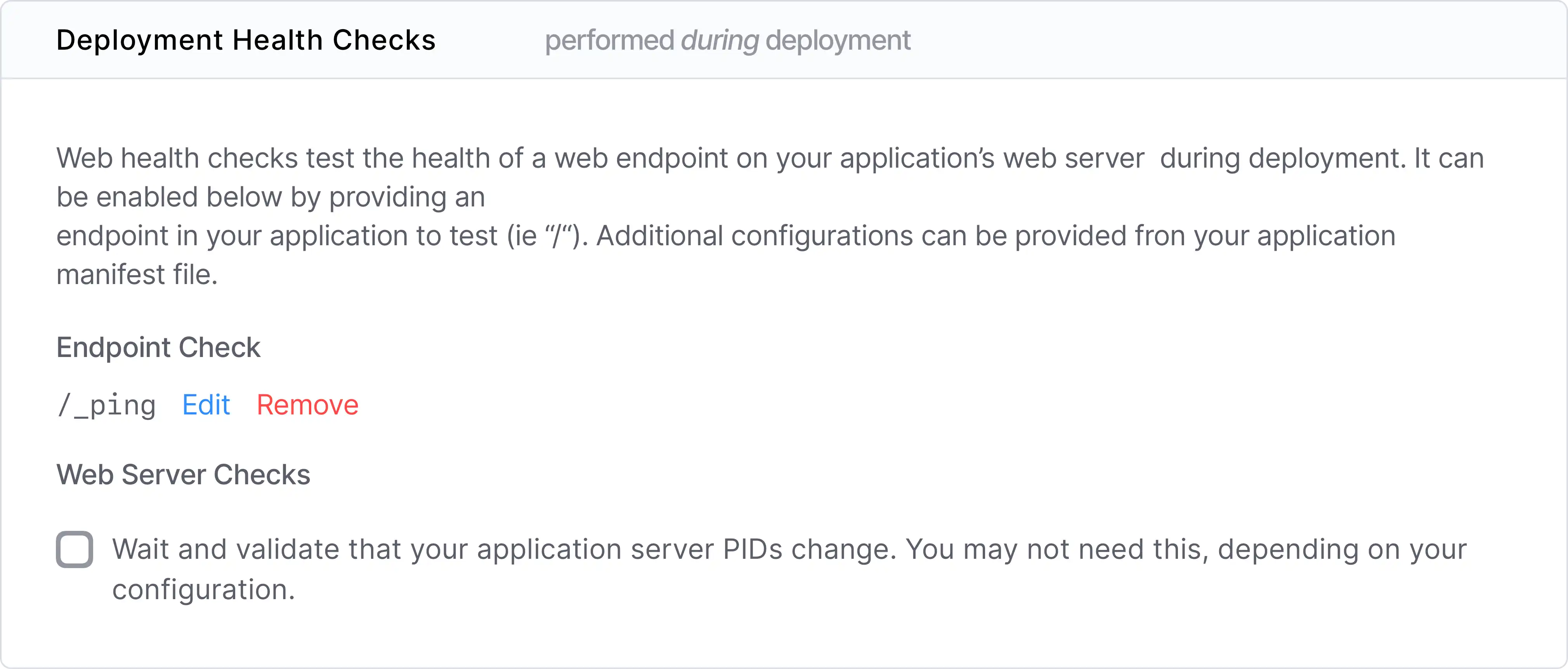The Best Way to Deploy and Maintain a Rails Application
Cloud 66 is how the worlds best Rails companies deploy and maintain their applications.
Deployments Built for Rails
Secure, Scalable and Easy to Manage
Rails is an great framework to build web applications. It set strong conventions that make it easy to build apps.
Instead of building a generic deployment tool for all frameworks, Cloud 66 for Rails is built specifically for Rails and its needs, using the same conventions and patterns that Rails uses.
Over the past 12 years, we've built all the features you need to deploy, scale and manage a secure Rails application on any cloud.
Packed with features for Rails
Secure and Scalable Rails deployments on any cloud
Rails specific requirements for a production ready environment include support for Asset Pipeline Compilation, ActionCable (websocket) ready proxy, support for upgrades for Ruby and NodeJS, database migrations and more.
Here are a few of the features that make Cloud 66 the best way to deploy and manage your Rails applications:
Deployments
Different methods of deployment for different use cases, supporting fast and safe deployments.
Rollout Strategies
Experiment with different versions of your code before rolling out to all servers. The most simple way to use a Blue/Green or Canary deployment strategy without any additional tools.
Autoscaling
Respond to changes in traffic with automatic scaling of your web servers and reduce costs by scaling down when traffic is low.

Cloud 66 can automatically scale your web servers based on real user experience metrics like HTTP Response Time or conventional metrics like the CPU or Memory usage of your servers.
Setting up an Autoscaling rule is as simple as declaring your desired value for a specific metric. This metric will be calculated across all your servers to drive automatic scaling decisions.
All scaling decision are logged and audited so you can debug and see your Autoscaling rules in action.
Preview Deployments
Deploy a new instance of your code every time you push a new commit to your repository so your team and clients can preview the changes you're making.
Security Updates and Patches
We automatically patch your servers and deployed components with the latest security updates so you can focus on building your product.

Cloud 66 automatically patches your OS and packages with the latest security updates. You can also choose to patch your servers during a deployment.
If you have more than one server, the patching and restart will ensure zero downtime by applying the patches one server at the time and running various checks on the servers before putting them back online.
Deploy Your First Application Today
Monitoring and Health Checks
Cloud 66 monitoring and health checks, check the health of your servers during and after each deployment and contiously monitor them from different locations around the world.

Environment Variables and Secrets
A central place to manage your environment variables, configuration parameters and secrets for your applications, that comes with team access control.
All needed environment variables for the deployed components are automatically generated. For example if you have MySQL as your database,MYSQL_ADDRESS, MYSQL_USERNAME, MYSQL_PASSWORD and other variables are automatically generated for you.
Version Controlled Configuration
All components deployed by Cloud 66 on your servers are the ones your team would have picked if you wanted to manage them manually. They also come with a git backed version control for your configuration files so you can make changes confidently.
Sometimes you need to make changes to your configuration files. We don't want to take that away from you. We also want to make it easy for you and your team to make those changes in a controlled and safe way and across all your servers at the same time.
All components installed and configured by Cloud 66 on your servers have their configuration files accessible via a git backed version control. Any changes you make will be sent to the server and tested before going live, and you can always rollback to a previous version.
All configuration files also benefit from ongoing security updates and patches, applied by Cloud 66.
We call this CustomConfig
SSL Certificates
All endpoints of your application and API are automatically protected by SSL certificates issued by Let's Encrypt for your domain. These certificates are automatically renewed and managed by Cloud 66.
Wildcard Certificates are automatically issued for your domain and all subdomains. These certificates are automatically renewed and managed by Cloud 66. We support a wide range of DNS providers.
If you prefer to use your own SSL certificates, you can upload them to Cloud 66 and we will install them on your servers for you. Intermediate certificates are also supported.
Deploy Rails, Anywhere
Automated Testing (CI) Integration
If you have a CI system, like Github Actions, Jenkins, CircleCI, etc, you can configure Cloud 66 to trigger a deployment after your CI pipeline is completed. This is useful for testing your code before merging it to your main branch.
You can also start your CI flow, after your images are built by BuildGrid. This can be useful when you want to test your application in a production-like environment.
Failover and Disaster Recovery
The worst time to find out that your failover and disaster recovery plan doesn't work is when you need it the most.
That's why we built FailoverGroups, a feature that lets you deploy the same code across multiple servers, regions or even clouds and switch between them with a single click or API call.
Combined with database replication and monitoring features, FailoverGroups give you the control and simplicity you need during an emergency.